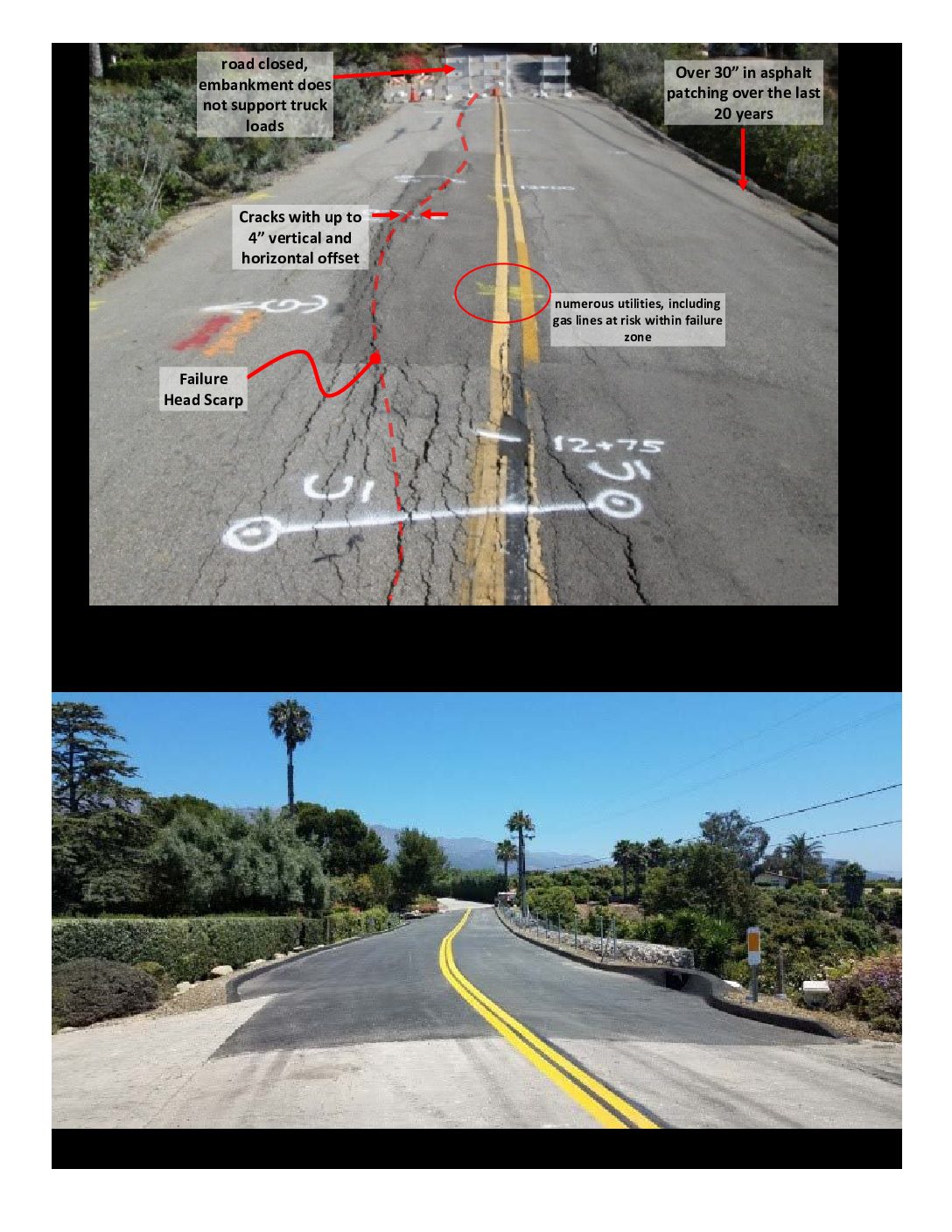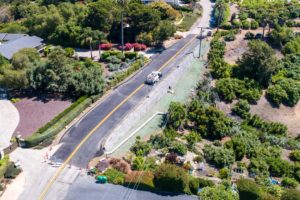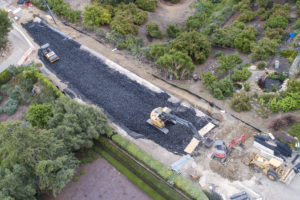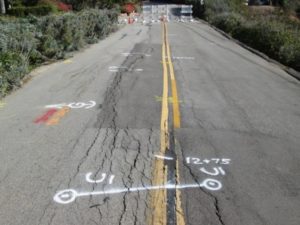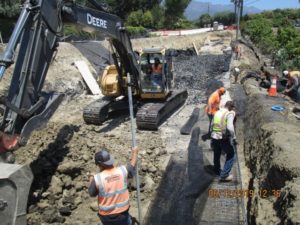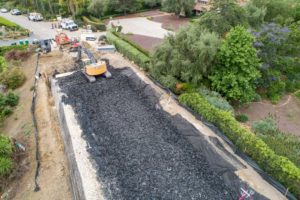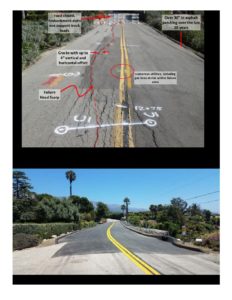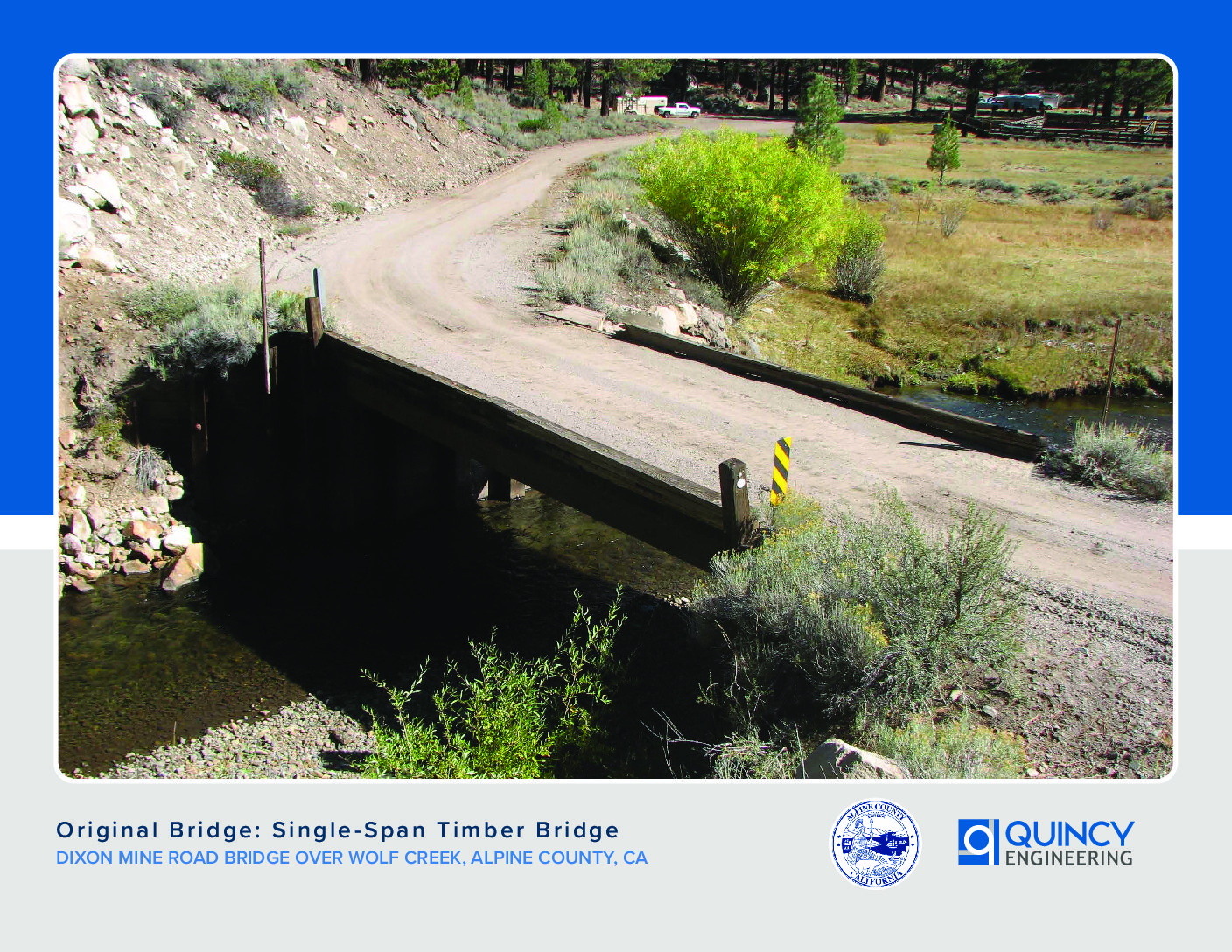Ortega Ridge Mechanically Stabilized Tire Aggregate Wall
Location
Ortega Ridge Road near Greenwell Avenue
City or County Responsible for Project
County of Santa Barbara
Category
Roads: Efficient and Sustainable Road Maintenance, Construction and Reconstruction Projects.
Author
Chris Sneddon
Santa Barbara County Public Works
123 E. Anapamu St, Santa Barbara, CA 93101
8055683064
Project Description
Santa Barbara County Public Works reconstructed a failed roadway embankment using recycled tires for the Ortega Ridge Road Slide Repair project. Public Works restored an unsafe road and diverted over 80,000 tires from California’s landfills in the form of Tire-Derived Aggregate (TDA) fill. This pilot project, a partnership between the State of California (CalRecycle) and the County, combines the use of TDA and Mechanically Stabilized Earth (MSE) elements. Using an innovative combination of these design elements allowed efficient, streamlined design and construction, reduction in environmental impacts, smaller construction footprint, and lower cost than traditional embankment reconstruction methods. Ortega Ridge Road had been slowly failing for over a decade. The original roadway embankment was built by filling a swale with loose, weak, poorly compacted materials. The road sat on over 28 feet of unstable material. Ongoing settlement and creep failure resulted in cracks continually propagating and growing up to 4-6” wide and deep. In the last 20 years, maintenance crews continually patched the road as it cracked, settled, and slowly failed. In 2015, Public Works closed the roadway when it could no longer support vehicle loads. At that time, more than 30 inches of asphalt had been placed over the years in attempts to stabilize the roadway. A traditional long-term repair solution would be costly and challenging. A conventional project would require an acquisition of additional easements for construction. The 28-foot deep failed embankment and utilities within the embankment presented a challenge. The site is also in the coastal zone, where permitting large retaining structures is difficult, costly, and time consuming. Public Works addressed these problems with an innovative project that was less expensive and avoided delays from permitting and property acquisition. The lightweight fill reduced the need for a large fill footprint. This also eliminated the need for a retaining wall and permitting requirements. Public Works reduced costs further through CalRecycle grants that provided funding for the fill material and design work. Finally, the mechanically stabilized elements allowed the slope to be constructed at a steeper angle. This reduced the need to build repairs outside the road right of way on private property. The project was constructed in the same amount of time it would take to build traditional embankment fills and MSE projects. CalRecycle provided expert support to the designers, inspectors, and contractors to ensure construction quality and methods of these new technologies, and to restore a fully operational two-lane road for the traveling public. As a result, Public Works was able to open a safe, stable roadway to the traveling public more quickly and inexpensively than traditional methods, with the environmental benefit of reducing the number of used tires buried in landfills.

